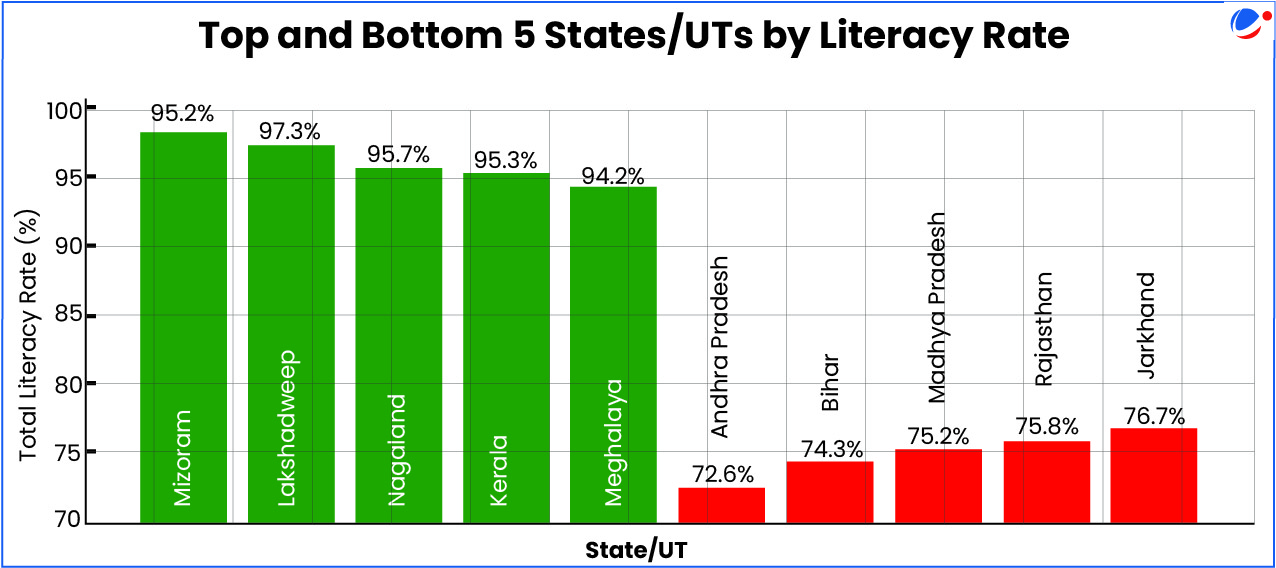Why in the News
Recently, the Chief Minister of Mizoram officially declared Mizoram a fully literate state, making it the first state in India to achieve full functional literacy.
More on the News:
- Mizoram crossed above 95% literacy rate (98.20% as per the PLFS Survey 2023-24).
- Earlier, in June 2024, Ladakh became the first administrative unit to declare full functional literacy.
- Goa has become the second state to achieve full functional literacy.
- According to the Ministry of Education above 95% literacy rate is considered equivalent to Full literacy.
- These developments are due to the implementation of ULLAS - Nav Bharat Saaksharta Karyakram
Note* Kerala's declaration of full literacy in 1991 was based on the National Literacy Mission(>90% literacy rate).
Literacy Vs Functional Literacy
- Literacy: According to the Office of the Registrar General of India, a person aged 7 years and above who can read and write with understanding in any language is considered literate.
- Functional Literacy: The ability to read, write, and comprehend information in a way that allows an individual to function effectively in their daily life.
- This includes being able to read and understand basic instructions, fill out forms, use technology, and make informed decisions based on written information.
Literacy in India according to Periodic Labour Force Survey (PLFS) 2023-24
 |
About ULLAS - Nav Bharat Saaksharta Karyakram or New India Literacy Programme (NILP)
- Defined literates: Learners who can read, write, do basic math, and have digital and financial literacy (not just sign or write their names).
- Type:Centrally Sponsored Scheme aligning with the National Education Policy (NEP) 2020.
- Target: 5 five crore learners, with 1 crore learners per year by using "Online Teaching, Learning and Assessment System (OTLAS)".
- OTLAS is a computer application embedded in the Web Portal/Mobile App under ULLAS developed by the National Informatics Centre (NIC)
- Duration: FY2022- 23 to 2026-27.
- Ministry: Ministry of Education.
- Target Group: Adults aged 15 and above from all backgrounds who missed formal schooling.
- Components: Foundational Literacy and Numeracy, Critical Life Skills (like financial literacy, digital literacy), Basic Education, Vocational Skills, and Continuing Education.
- Implementation: Through volunteerism, promoting social responsibility and a sense of duty or 'Kartavya Bodh'.
- Samajik Chetna Kendras are established by utilizing available space in schools, local cultural centres, community halls, etc., with schools acting as the unit of implementation.
- Use of Regional Languages: To access educational content via the DIKSHA Portal and the ULLAS Mobile App/Portal.
- Assessment & Certification: FLNAT (Foundational Literacy and Numeracy Assessment Test) is conducted twice a year—or on demand—at local schools.
Other initiatives for Literacy:
|



